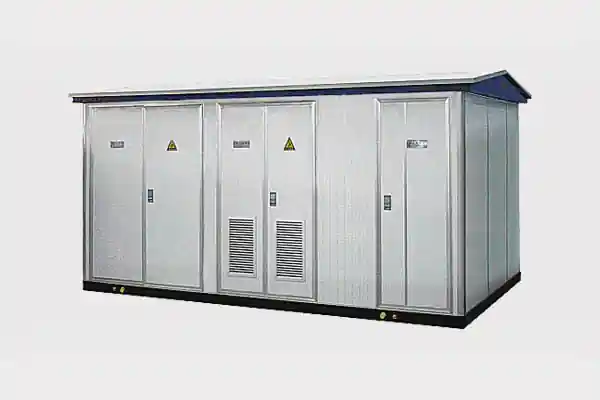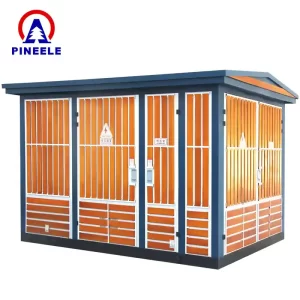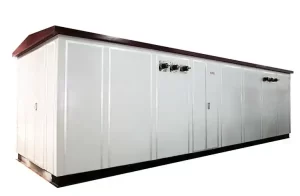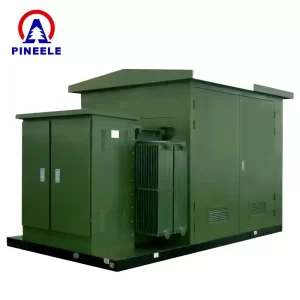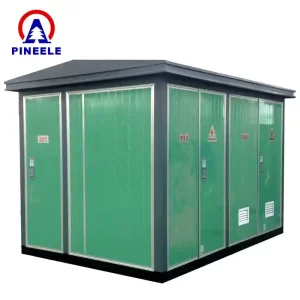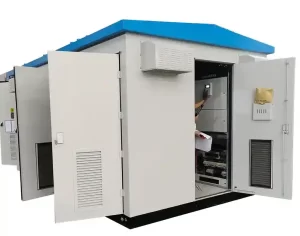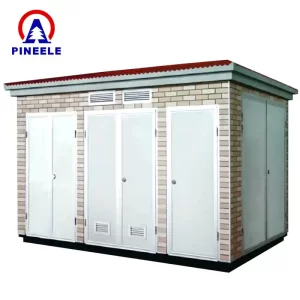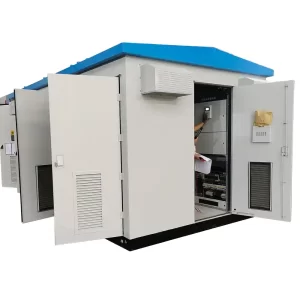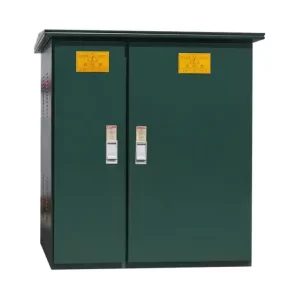- Introduction
- 1. What is an 11/33 kV Substation?
- Common Use-Cases:
- 2. Components of 11/33 kV Substations
- a. Power Transformers
- b. Switchgear (Indoor/Outdoor)
- c. Busbars
- d. Protection Relays
- e. Lightning Arresters and Surge Protectors
- f. Auxiliary Systems
- 3. Technical Specifications Table
- 4. Substation Design Considerations
- a. Load Forecasting
- b. Protection Coordination
- c. Layout Planning
- d. Environmental Factors
- e. Safety and Maintenance Access
- 5. Applications of 11/33 kV Substations
- 6. Compliance and International Standards
- 7. Substation Installation & Commissioning Steps
- a. Site Preparation
- b. Equipment Delivery & Erection
- c. Cable Termination & Earthing
- d. Pre-Commissioning Tests
- e. Final Testing & Energization
- 8. Advantages of 11/33kV Substations
- 9. Frequently Asked Questions (FAQs)
- Q1: What’s the difference between 11kV, 33kV, and 11/33kV substations?
- Q2: How is maintenance carried out for such substations?
- Q3: What are common faults in 11/33 kV substations?
Introduction
An11/33 kV substationplays a pivotal role in medium voltage power distribution networks. It functions as a critical node for stepping up or stepping down voltages between 33 kilovolts and 11 kilovolts, which are standard voltage levels in many global distribution grids. Whether deployed in urban, rural, or industrial environments, this substation ensures reliable, efficient, and safe power delivery.
Understanding the architecture and functionality of an 11/33 kVSubstationis essential for power engineers, developers, and energy planners. This guide explores the essential substation equipment, configuration, and industry standards associated with 11/33 kV substations.
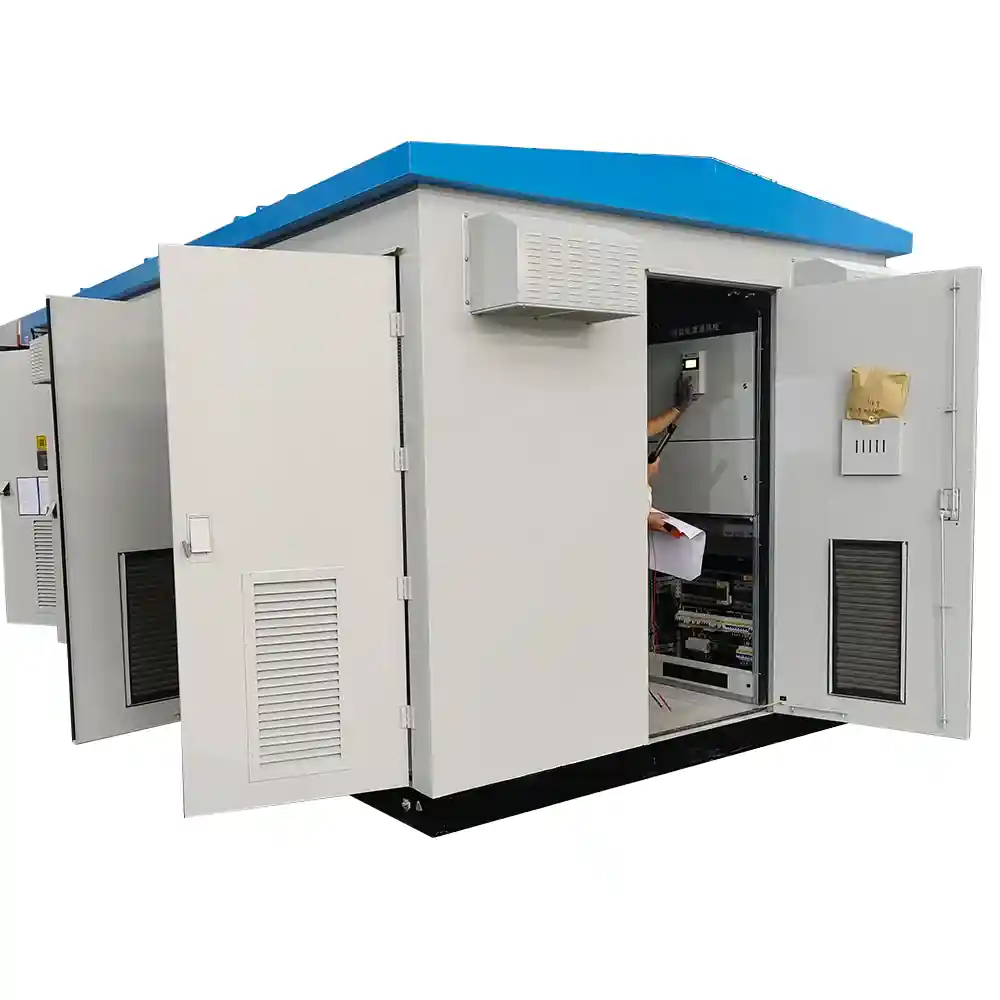
1. What is an 11/33 kV Substation?
An11/33 kV substationis designed to either step down voltage from 33kV to 11kV or step up from 11kV to 33kV, depending on the network layout. These substations are essential for bridging the gap between high-voltage transmission and low-voltage distribution.
Common Use-Cases:
- Stepping down voltage before it enters industrial or commercial zones.
- Interfacing between primary and secondary distribution networks.
- Serving as grid injection points in renewable energy plants.
2. Components of 11/33 kV Substations
An optimizedsubstationof this category typically includes:
a. Power Transformers
Transformers are the heart of the substation, converting voltage levels with high efficiency. For 11/33kV, these are often two-winding or three-winding transformers with ONAN/ONAF cooling.
b. Switchgear (Indoor/Outdoor)
Includes:
- Circuit breakers(Vacuum or SF6)
- Disconnectors/Isolators
- Load Break Switches (LBS)
- Earth Switches
c. Busbars
These are copper/aluminum conductors used to distribute power. Depending on reliability needs, substations may use single busbar, double busbar, or ring bus arrangements.
d. Protection Relays
Modern substations are integrated with IEDs (Intelligent Electronic Devices) compliant withIEC 61850. Common relays include:
- Overcurrent
- Differential
- Distance protection
e. Lightning Arresters and Surge Protectors
Prevent transient overvoltages from damaging equipment.
f. Auxiliary Systems
Battery banks, battery chargers, and lighting systems.
3. Technical Specifications Table
| Parameter | Typical Range |
|---|---|
| Primary Voltage | 33 kV |
| Secondary Voltage | 11 kV |
| Frequency | 50 Hz |
| Transformer Rating | 500 kVA to 10 MVA |
| Short Circuit Level | 25-31.5 kA for 3 sec |
| Breaker Type | VCB / SF6 |
| Relay Communication | IEC 61850, Modbus, DNP3 |
| Earthing Resistance | < 1 ohm (typical) |
| Insulation Coordination | BIL 170 kVp |
4. Substation Design Considerations
Designing a high-performance substation involves several layers:
a. Load Forecasting
Calculate peak loads to size equipment appropriately.
b. Protection Coordination
Ensure relays and breakers operate selectively to isolate only the faulted section.
c. Layout Planning
Determine whether to useoutdoororindoor switchgear, GIS (Gas Insulated Switchgear), or AIS (Air Insulated).
d. Environmental Factors
Include seismic, wind, and temperature stress resilience.
e. Safety and Maintenance Access
Adequate clearance and safety interlocks are critical.
![Image Placeholder: Substation Protection Scheme Diagram]
5. Applications of 11/33 kV Substations
- Industrial parks
- Large commercial zones
- Solar and wind farms
- Government installations
- Urban and peri-urban electrical grids
These substations are often used to feed 11kV ring main units (RMUs) in dense areas.
6. Compliance and International Standards
Everysubstationmust conform to:
- IEC 62271-100 / 200 (High-voltage switchgear)
- IS 1180 (Distribution Transformers)
- IEEE 1584 (Arc Flash Analysis)
- ISO 45001 (Occupational safety)
7. Substation Installation & Commissioning Steps
a. Site Preparation
Surveying, excavation, and concrete foundations.
b. Equipment Delivery & Erection
Placement of transformers, panels, breakers, and bus ducts.
c. Cable Termination & Earthing
Ensuring proper grounding and cable insulation testing.
d. Pre-Commissioning Tests
IR value tests, primary/secondary injection, relay settings.
e. Final Testing & Energization
Systematic start-up with monitoring for voltage sags/swells.
8. Advantages of 11/33kV Substations
- Improved voltage regulation
- Efficient load management
- Flexible and modular deployment
- High level of operational safety
- Automation-ready configuration
9. Frequently Asked Questions (FAQs)
Q1: What’s the difference between 11kV, 33kV, and 11/33kV substations?
A1:11kV and 33kV substations operate at fixed voltage levels. 11/33kV substations bridge these two, offering flexibility in network transitions.
Q2: How is maintenance carried out for such substations?
A2:Regular thermographic analysis, relay testing, transformer oil tests, and alert systems guide preventive maintenance.
Q3: What are common faults in 11/33 kV substations?
A3:Transformer overloads, breaker trip faults, insulation failures, and communication errors are typical.
An11/33 kV substationis a robust, scalable, and essential component of power infrastructure. It ensures seamless power flow between different voltage levels, enabling grid stability, optimized energy distribution, and reliability across sectors.
With increasing focus on automation and renewable integration, 11/33 kV substations are becoming more intelligent and efficient than ever before. Investing in well-designed substations helps mitigate outages, supports load growth, and builds a smarter energy future.
